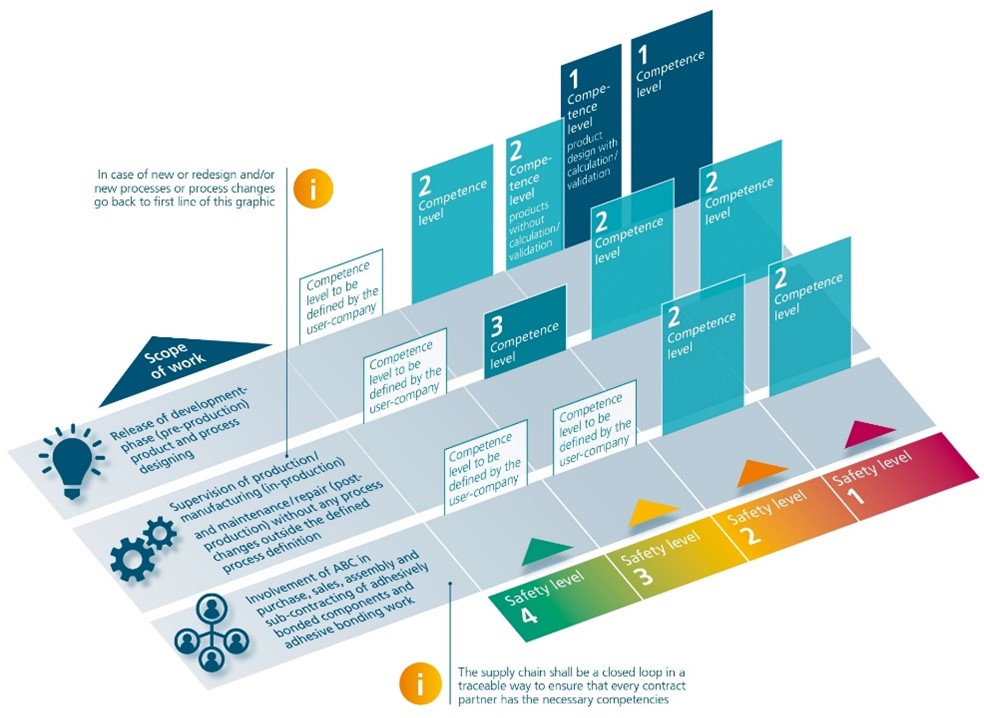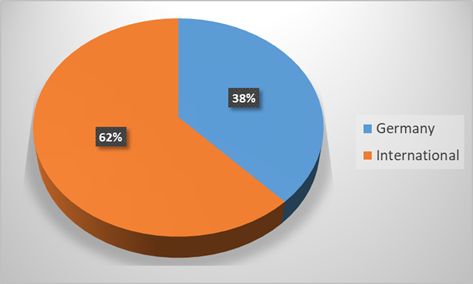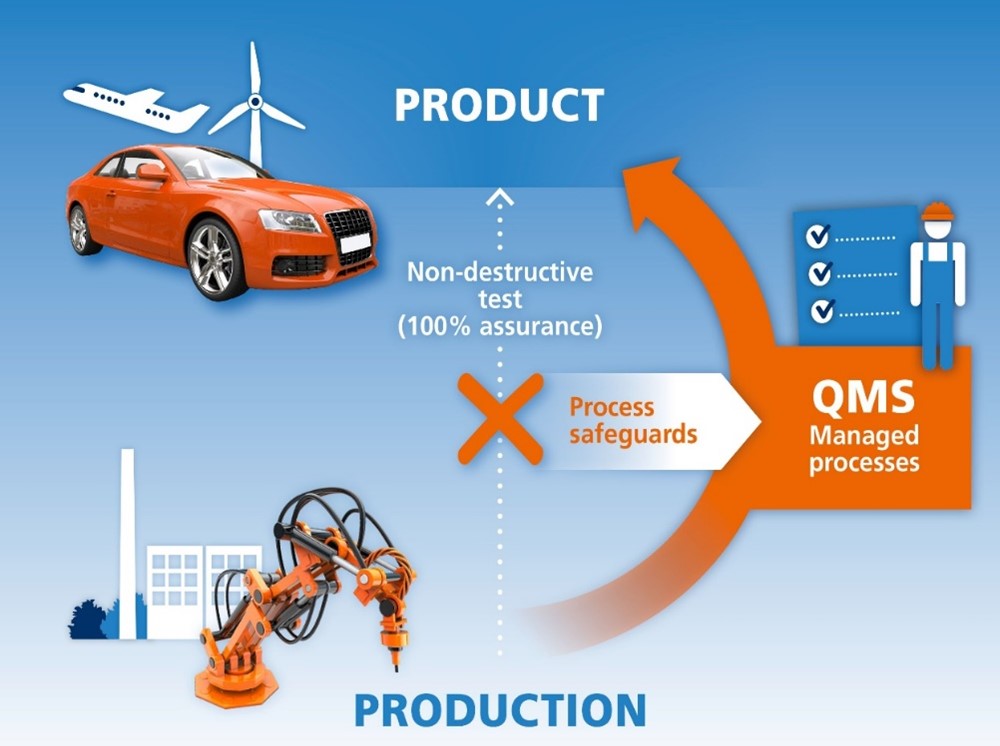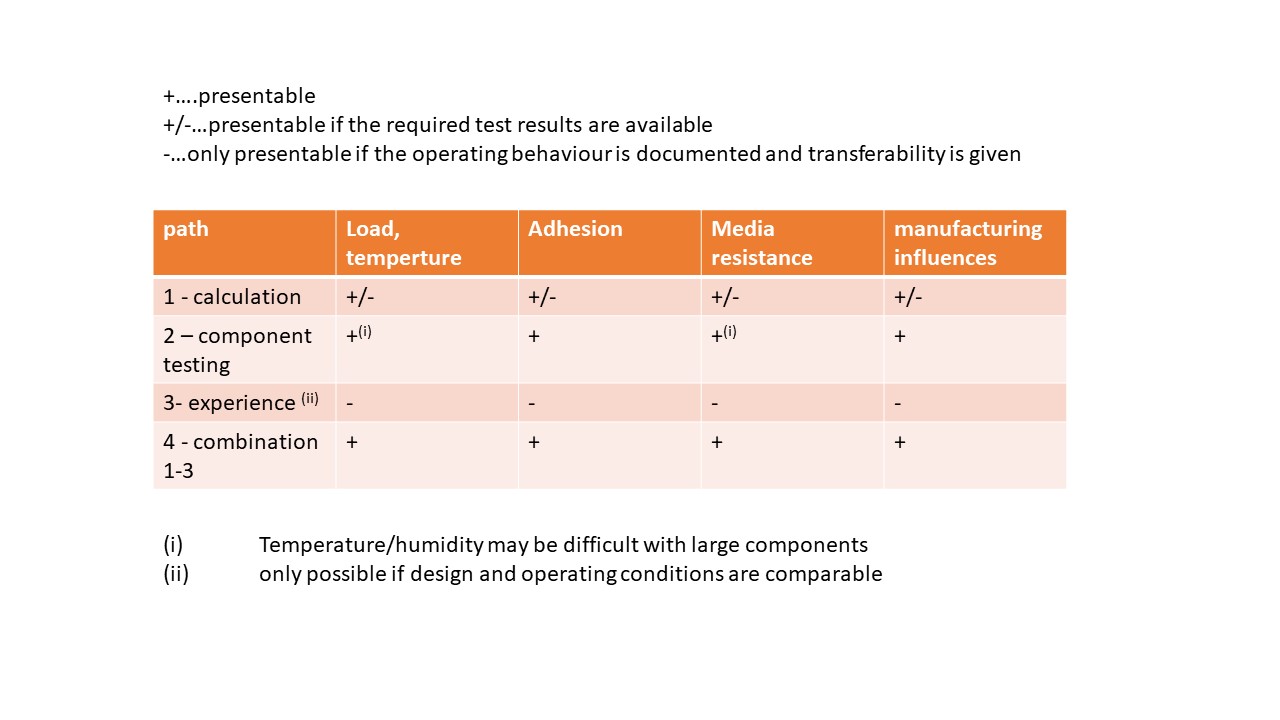- Basics: General Product Safety Regulation (GPSR) and »State of the Art«
- General Product Safety Regulation (GPSR) and Quality Management System: »Special Processes«
- General Product Safety Regulation (GPSR) and Quality Management System: Concretization by standards
- »State of the Art« new: General Product Safety Regulation + QMS + QA Standards
- Quality assurance standards for adhesive bonding technology and fiber composite technology
- Core elements of the quality assurance standards
- Other standard contents
- Company certification
Quality assurance standards for adhesive bonding technology and fiber composite technology
Basics: General Product Safety Regulation (GPSR) and »State of the Art«
In order to use a material, a product made from it, or a process safely, work must be carried out in accordance with the state of the art, in line with the General Product Safety Regulation (GPSR). A product may only be placed on the market if »it does not endanger the safety and health of persons when used as intended or in a foreseeable manner«.
General Product Safety Regulation (GPSR) and Quality Management System: »Special Processes«
If this verification cannot be provided in a process- and product-specific manner, purely non-destructively and with 100% certainty, then according to ISO 9001, it is a so-called »special process«. To fulfill the legally required »state of the art«, errors must be consistently avoided from the beginning of the product development phase, through production, maintenance and repair, to the end of the product's life. This is done by verifying the processes, describing, controlling and documenting them.
Just as with welding, application processes for adhesive bonding technology and fiber composite technology, as well as products manufactured using these technologies, cannot be 100% tested for defects without being destroyed. Both technologies (and the welding technique) are therefore »special processes«, in addition to countless others, by the way.
Consequently, the »state of the art« for both technologies is to avoid possible process and product defects by means of a comprehensive quality management system (QMS) in accordance with ISO 9001 (see figure).
General Product Safety Regulation (GPSR) and Quality Management System: Concretization by standards
However, the logically broad-based ISO 9001 can only define the fundamental QM framework conditions for a quality management system (QMS). Consequently, this requires technology-specific concretizations.
These specifications are provided by adhesive bonding and fiber composite quality assurance standards, which are comparable to the corresponding welding standards. They specify an existing QMS and the ISO 9001 core idea of comprehensive defect prevention in a technology-specific way and help user companies to work safely with the respective technology in line with the legally required »state of the art«.
»State of the Art« new: General Product Safety Regulation + QMS + QA Standards
In this way, QA standards comprehensively complement the legally required »state of the art« for the professional, error (source) avoiding planning, organization and implementation of adhesive bonding and fiber composite processes and products in all areas of industry and handicraft.
Consequently, the required »state of the art« for adhesive bonding technology and fiber composite technology consists of the inextricable link between product safety regulation, quality management system and adhesive bonding or fiber composite QA standards (see figure).
By implementing the standards, the user ensures that adhesive bonding or FRP processes are robust and reproducible.
Quality assurance standards for adhesive bonding technology and fiber composite technology
The cross-industry quality assurance standards for adhesive bonding technology and fiber composite technology (see below) define the requirements for quality-assured development and execution from the idea to the end of the product's life, as well as the general organizational, contractual and manufacturing principles for development, production, maintenance and repair.
Adhesive bonding technology standards
| DIN EN ISO 21368 | Adhesives – Guidelines for the fabrication of adhesively bonded structures and reporting structures for the risk evaluation of such structures |
| EN ISO 21368 | Adhesives - Guidelines for the fabrication of adhesively bonded structures and reporting structures for the risk evaluation of such structures |
| ISO 21368 | Adhesives - Guidelines for the fabrication of adhesively bonded structures and reporting structures for the risk evaluation of such structures |
| DIN 2304-1 | Adhesive bonding technology - Quality requirements for adhesive bonding processes - Part 1: Adhesive bonding process chain |
| DIN 2304-2 | Adhesive bonding technology - Quality requirements for adhesive bonding processes - Part 2: Adhesive bonding in shipbuilding |
| DIN EN 17460 | Railway applications - Adhesive bonding of rail vehicles and their components (replaces the series of standards DIN 6701 - Adhesive bonding of rail vehicles and components) |
| EN 17460 | Railway applications - Adhesive bonding of rail vehicles and their components (replaces the series of standards DIN 6701 - Adhesive bonding of rail vehicles and components) |
| TL A-0023 | Adhesive bonding and related processes – Quality requirements for manufacturing and repair operations for military products |
Fiber composite technology standards
| DIN SPEC 35255 | Quality requirements for composite processes |
| DIN 35255 | Quality requirements for composite processes (Publication at the end of 2025, then replaces DIN SPEC 35255) |
Core elements of the quality assurance standards
All QA standards contain the same core elements, analogous to the welding standards, and are therefore structurally compatible with each other.
Core element 1: Classification into safety classes 1 - 4
In accordance with the standards mentioned, the user classifies all adhesively bonded joints into safety classes from level 1 to level 4. To put it simply, this classification is based exclusively on the question:
What happens if the adhesively bonded joint or the composite component fails?
The answer to this question lies firmly within the responsibility of the company using the adhesive or fiber composite and cannot be delegated to other (contract) partners such as adhesive or resin/fiber manufacturers. The classification is the responsibility of the designer or component manager of the user company, with the involvement of the supervisory staff named by the company in accordance with core element 2 (see below) (adhesive bonding technology: Adhesive Bonding Coordinator - ABC / fiber composite technology: Composite Coordinator - CC).
Basic presentation of safety classes in adhesive bonding technology and fiber composite technology
| Level 1 | Direct/indirect threat to life and limb |
| Level 2 | Possible risk of life and limb Possible major environmental damage |
| Level 3 | Pprobably no personal injury Probably no major environmental damage Maximum loss of comfort/performance |
| Level 4 | Personal injury under foreseeable circumstances excluded Exclusively comfort/performance losses |
Core element 2: Objective verification of the respective technological personnel competence (Competence level 1 - 3)
The user company must have a sufficient number of employees at the technical decision-making and supervision level as well as at the execution level who can demonstrate to third parties that they have objectively verifiable qualifications in adhesive bonding and fiber composite technology.
The supervisory staff (adhesive bonding technology: Adhesive Bonding Coordinator – ABC / fiber composite technology: Composite Coordinator – CCC) is to be appointed by the user company. These supervisors are employees who are responsible for the respective technology and the associated activities within the company.
During operation, the supervisory staff are therefore the central point of contact for all quality-influencing factors of the »special processes« of adhesive bonding and fiber composite technology – from the planning, including design and process planning, to production, maintenance and repair. In accordance with the aforementioned quality standards, the user company must provide sufficient and verifiably qualified personnel for the aforementioned tasks and document their appointment.
Their suitability and specialist knowledge must be verifiably documented. The below-mentioned personnel certification qualifications in adhesive bonding technology and fiber composite technology are recognized as objective, competence-specific proof and, depending on the safety class, justify the designation as supervisory personnel (adhesive bonding technology: ABC/fiber composite technology: CC):
| Adhesive Bonding Technology | www.bremen-bonding.com |
| Competence level 1 | European Adhesive Engineer - EAE Adhesive Bonding Technologist - ABT |
| Competence level 2 | European Adhesive Specialist - EAS |
| Competence level 3 | European Adhesive Bonder - EAB |
| Fiber composite technology | www.bremen-composites.com |
| Competence level 1 | Composite Engineer - CE |
| Competence level 2 | FRP-Specialist |
| Competence level 3 | FRP-Manufacturer FRP-Remanufacturer |

Core element 3: Verification management of product and process safety
The fact that an adhesively bonded joint or fiber composite component must be dimensioned in such a way that the actual loading is always lower than the maximum load capacity is the »state of the art« in terms of content. What is new in the context of the aforementioned QA standards for adhesive bonding technology and fiber composite technology is that this must be ensured with the participation of supervisory staff (adhesive bonding technology: ABC/fiber composite technology: CC) and that the verification process must be documented in a comprehensible manner.
The supervisory staff (adhesive bonding technology: ABC/fiber composite technology: CC) must be involved in the release.
The verification management itself can be carried out in the following four paths:
- Verification calculation method
In the case of the calculation-based verification process, the loading on the adhesively bonded joint or the fiber composite component is determined on the basis of calculations, standards or real data. In this process, the loading, environment and manufacturing conditions are transferred to a model, the loading is calculated and compared with the load capacity. This method is particularly suitable when the real conditions can be easily represented mathematically. However, this verification process entails uncertainties due to mathematical abstraction and could involve a great deal of work in determining the characteristic values.
- Component testing
In component testing, adhesively bonded joints and fiber composite components are tested, for example, in a test stand under real conditions or conditions that simulate reality. In the process, loads and environments as well as manufacturing influences are applied. The global/local failure of the adhesively bonded joint or the fiber composite component is observed and measured, and the reserve as well as safety are represented, for example, with the help of overload or a longer loading period. This approach provides direct verification on the structure without the uncertainty of computational abstraction and is a cost-effective method for small test components. However, it is rather difficult to verify low failure probabilities, as is the realization of complex test conditions (e.g. temperature changes in large components; possibly also pilot series production or the production of just one product).
- Documented experience
This approach requires verifiably documented load capacity based on empirical values that show that the design has already proven itself in the past. In addition, the transferability to the adhesively bonded joint or fiber composite component in operation must be documented. This approach is cost-effective due to the available experience and the uncertainty arising from computational abstraction is avoided. In addition, the direct verification can be provided on an existing construction under real conditions. However, the documented experience is only applicable if the construction and operating conditions are comparable.
- Combination of paths 1 - 3
The safest way to verify adhesively bonded joints or fiber composite components is to combine the first three methods. All requirements can be evaluated in a suitable manner and documented in a comprehensible way. The combination enables a computational verification that is supported and validated experimentally. Compared to paths 1 and 2, the environmental conditions, including ageing, can be better represented. In addition, experience is built up systematically – which in turn is only made possible by path 3. Although this path initially involves a relatively high level of effort, it later proves to be cost-effective in terms of data, experience and transferability.
Representability of the verification
When providing evidence, load and temperature, adhesion, media resistance and manufacturing influences play an important role. The table shows the representability of the individual factors for each method of verification. Here, too, it becomes clear that a combination of methods 1-3 offers the best possibility for both small and large components. However, under certain conditions it is sufficient to prefer individual methods (e.g. component testing for small components or documented experience with verified transferability to operating behavior).
Other standard contents
In addition to the three core elements mentioned above, the following areas are also defined in the standards:
- Contract review and subcontracting
- Development process and process planning
- Infrastructure
- Manufacturing and maintenance incl. repair
- Storage and logistics
- Monitoring of measuring, testing and manufacturing equipment
- Quality management
Company certification

Our DAkkS-accredited partner TBBCert (DIN EN ISO/IEC 17065) certifies companies according to the standards mentioned above.Companies in both fields of technology, adhesive bonding technology and fiber composite technology:
TBBCert (www.tbbcert.com)
Contact: Frank Stein (stein@tbbcert.de)


Worldwide, more than 1,150 companies (as of 01.02.2025) have already been certified according to one of the above standards. For more information, please click on the following links:
www.din2304.de (General industry)
www.en17460.com (Railway)
www.tla0023.de (Military products)
Outlook on the internationalization of these standards:
After a three-year transition period, the DIN 6701 series of standards for rail vehicle construction will be withdrawn in September 2025. From then on, DIN EN 17460 will apply worldwide. The same applies to DIN 2304-1: it will be withdrawn in June 2026 and replaced by DIN EN ISO 21368.
Companies that are already certified according to one of the national standards mentioned will be audited in accordance with the future standards in the course of the regularly scheduled re-certifications or surveillance audits in consultation with the certification body. You will receive further information on this during the audit planning.
Rail vehicle construction companies that are having themselves recertified are advised to seek certification according to DIN EN 17460.


